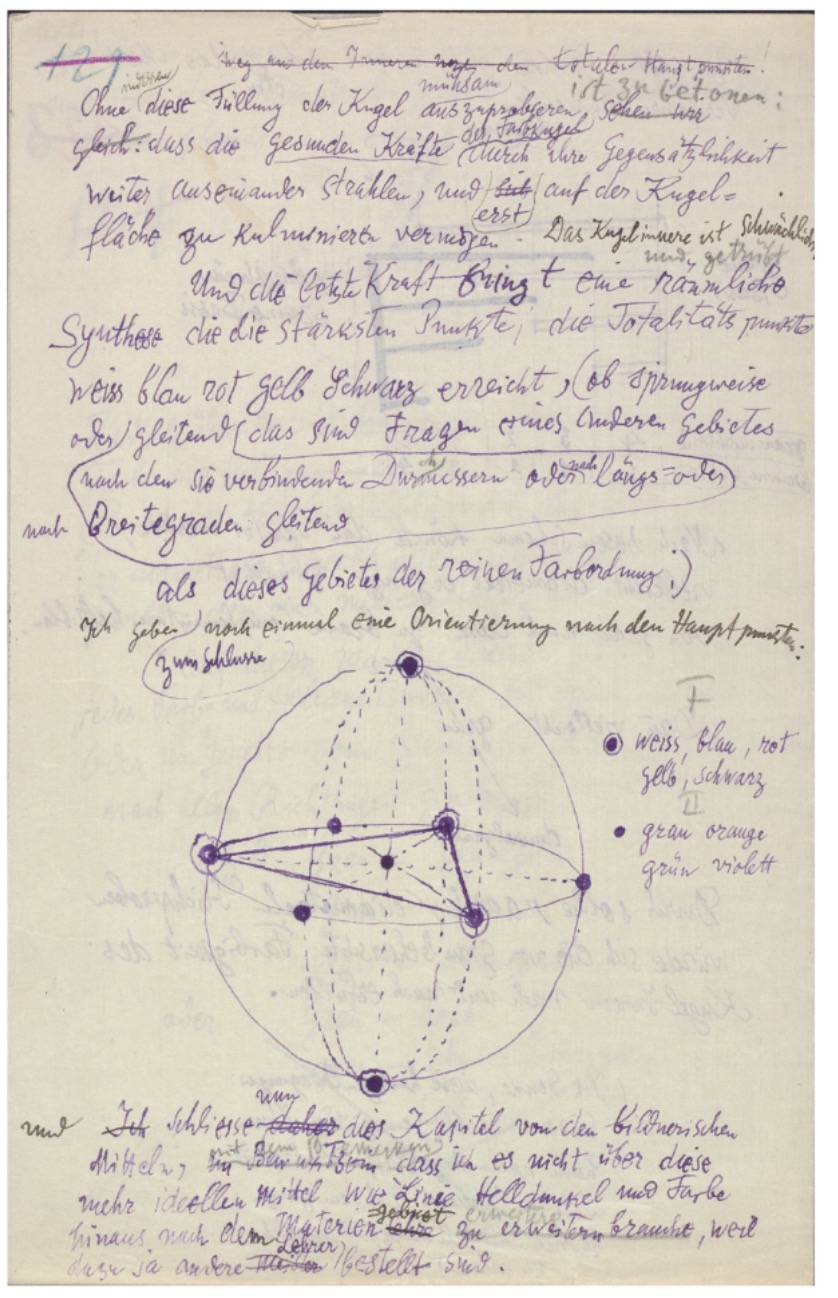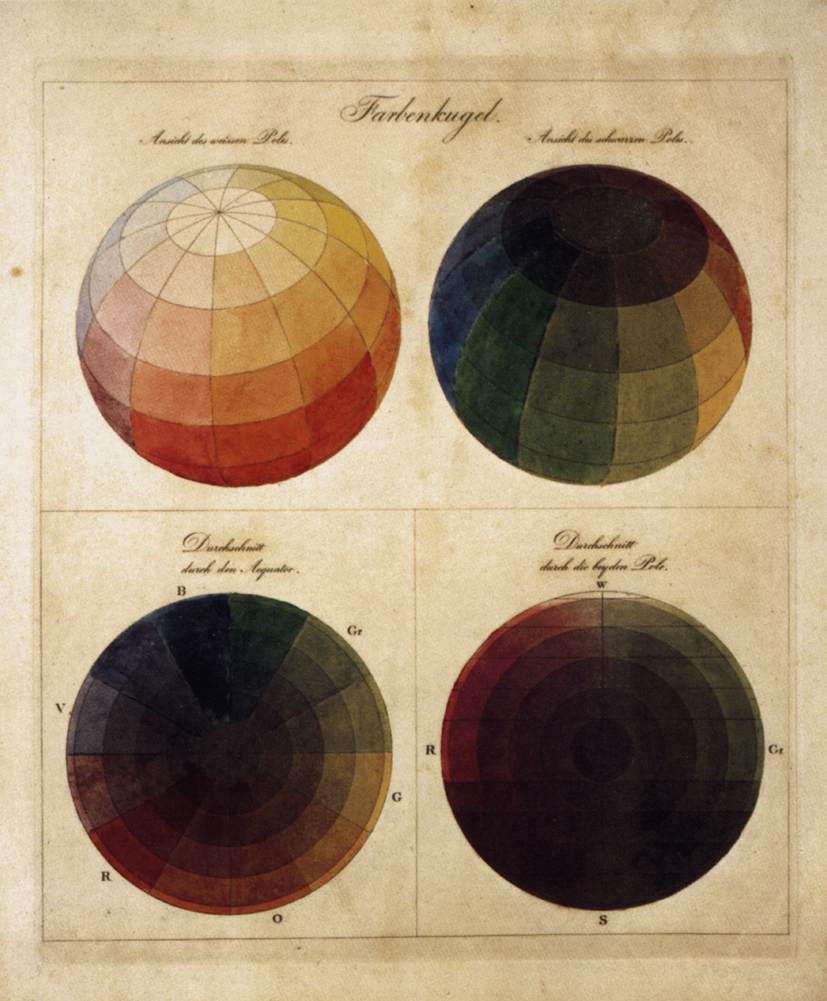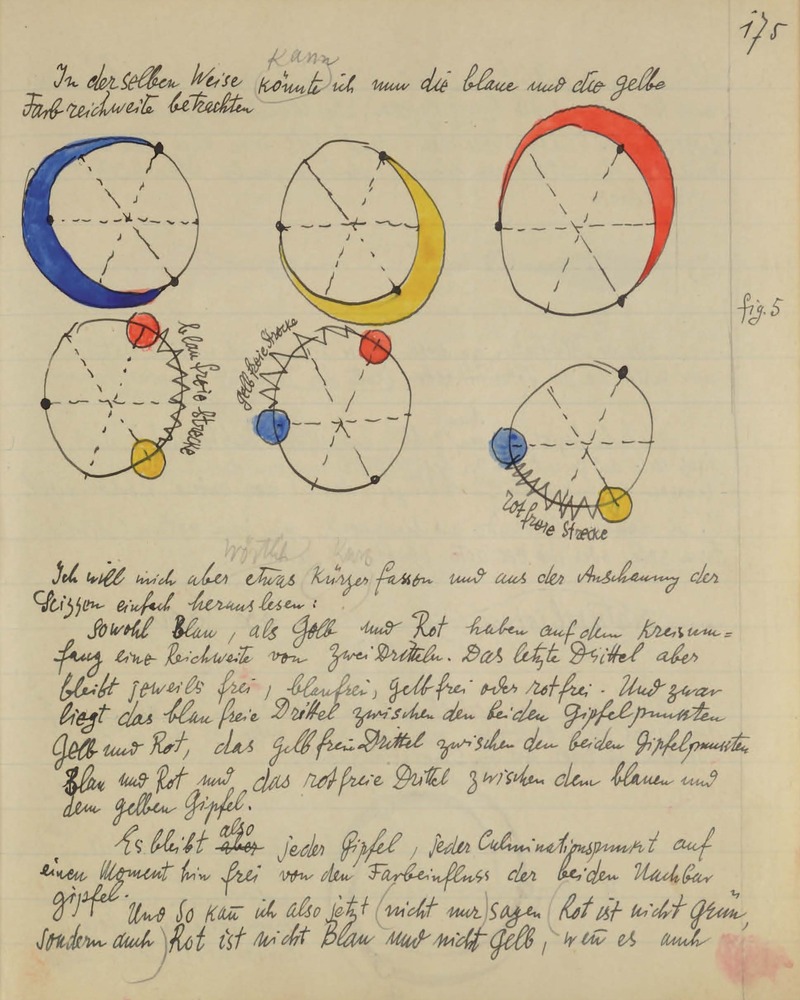SCHEMATIZING (33)
By:
April 30, 2024
One in a series of posts via which HILOBROW’S Josh Glenn will attempt to depict the intellectual and emotional highs and lows of developing a semiotic schema.

In Bauhaus lectures given in 1923–1924, Paul Klee developed from the rainbow a six-part color sphere — with red, orange, yellow, green, blue, and violet organized along its perimeter so that the complementary colors are located, in pairs, diametrically across from each other. The center of the circle — gray — is the dynamic transition point from one color to another by means of color gradation.
In George Stahl’s introduction to his translation of Philipp Otto Runge’s Farbenkugel (Color Sphere, 1810), we read that Klee’s color sphere was influenced by Runge’s Farbenkugel; this is reflected in Klee’s lecture notes. “Klee’s keen interest in geometry and implied correspondences between colors and geometrical diagrams,” Stahl writes, “led him to develop a graphic, geometric visualization of sections that can be drawn through the color circle and the six colors (diametrically, peripherally, and long chords.)”
Klee’s investigation of what we might call the spatial topography of color aimed to find new colors, color combinations, and mixtures. He arrives at finally at the concept of “color totality,” shown in the diagram here. [Stahl suggests that this diagram — which Klee refers to a “spatial synthesis of the abstract (color) points united into a totality on the spherical surface” — is likely modeled on figure 4 from Runge’s Farbenkugel.] The white and black poles (with gray in the middle) interfaces with two intersecting color triangles, one made up of the three base colors blue, red, and yellow, and the other made up of their mixtures, orange, green, and violet.
Klee choose triangles in order to differentiate between primary and secondary colors; he was fascinated by the question of when a primary color ceases to exist — and decided that the range for each primary color can be understood as being two-thirds of the color circle, overlaps occurring at points where the base colors mix.
All very interesting for thinking about when a semiosphere’s code ceases to be a code (or ceases to be a “primary” code, and becomes a “secondary” code). And this reinforces my notion that a semiophere’s center is of no interest — unlike a diagram of concentric circles in which everything develops out of the center, in this sort of chart everything interesting — “primary” — happens on the sphere’s surface, and then the further you penetrate inward the more it all turns to mush.
Below: Color spheres from Runge’s book.
See: Images from Klee’s Bauhaus notebooks.
MORE FURSHLUGGINER THEORIES BY JOSH GLENN: SCHEMATIZING | IN CAHOOTS | JOSH’S MIDJOURNEY | POPSZTÁR SAMIZDAT | VIRUS VIGILANTE | TAKING THE MICKEY | WE ARE IRON MAN | AND WE LIVED BENEATH THE WAVES | IS IT A CHAMBER POT? | I’D LIKE TO FORCE THE WORLD TO SING | THE ARGONAUT FOLLY | THE PERFECT FLANEUR | THE TWENTIETH DAY OF JANUARY | THE REAL THING | THE YHWH VIRUS | THE SWEETEST HANGOVER | THE ORIGINAL STOOGE | BACK TO UTOPIA | FAKE AUTHENTICITY | CAMP, KITSCH & CHEESE | THE UNCLE HYPOTHESIS | MEET THE SEMIONAUTS | THE ABDUCTIVE METHOD | ORIGIN OF THE POGO | THE BLACK IRON PRISON | BLUE KRISHMA | BIG MAL LIVES | SCHMOOZITSU | YOU DOWN WITH VCP? | CALVIN PEEING MEME | DANIEL CLOWES: AGAINST GROOVY | DEBATING IN A VACUUM | PLUPERFECT PDA | SHOCKING BLOCKING.


